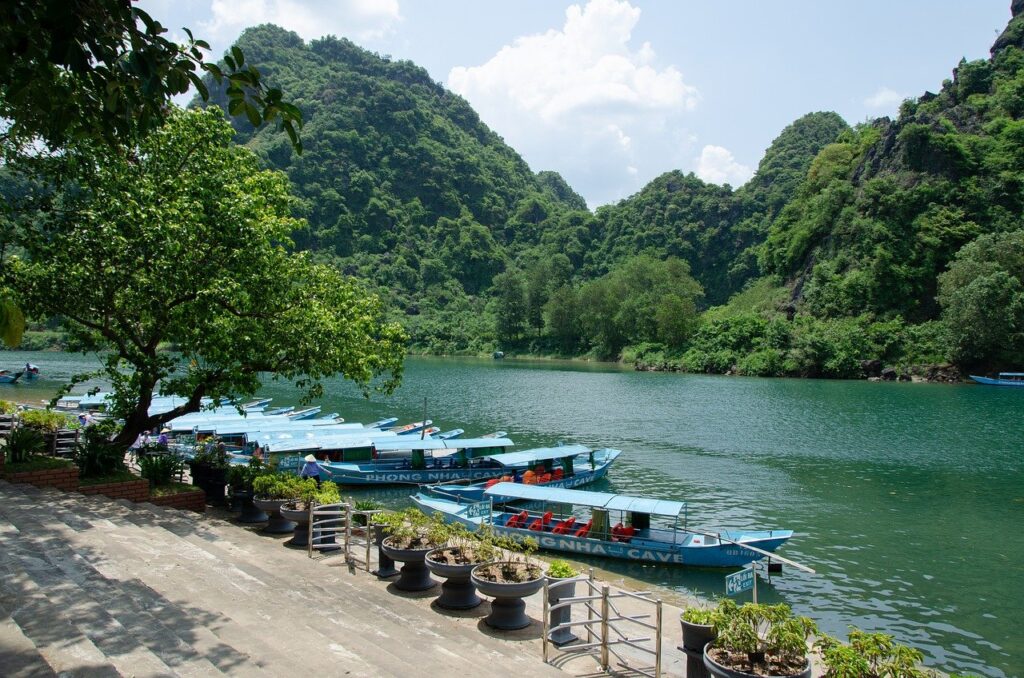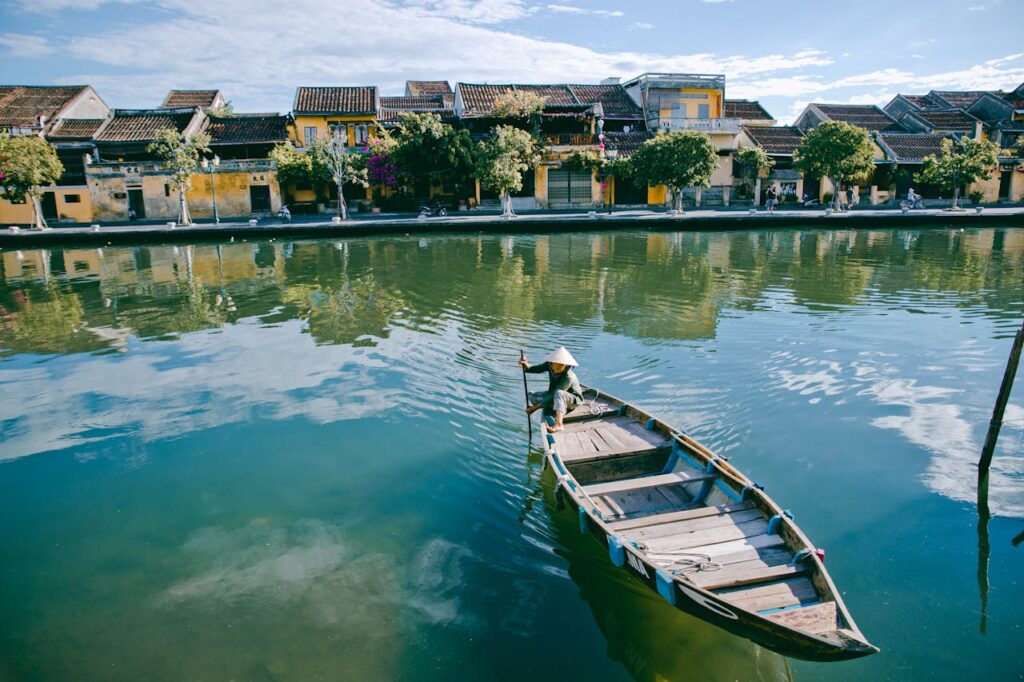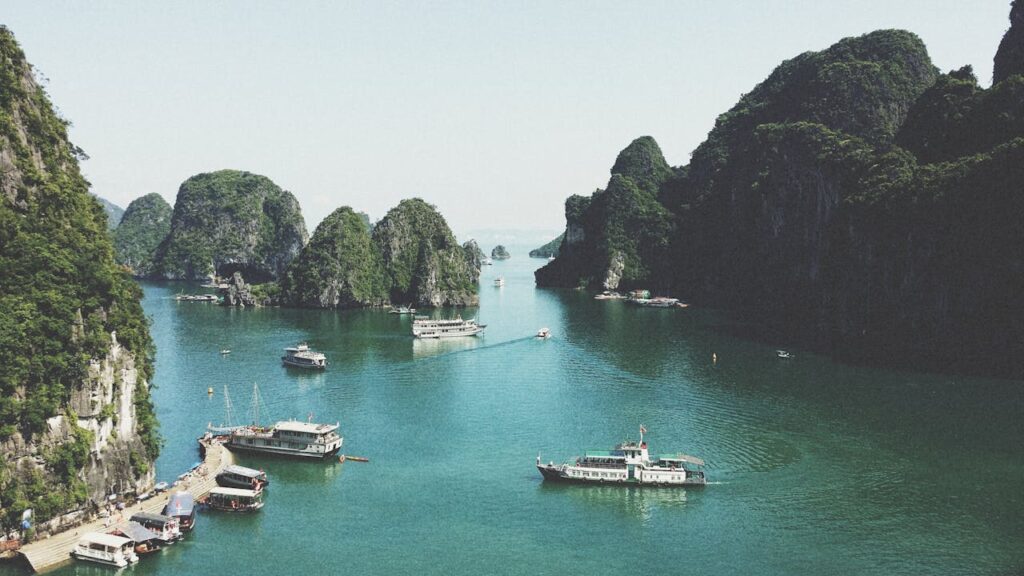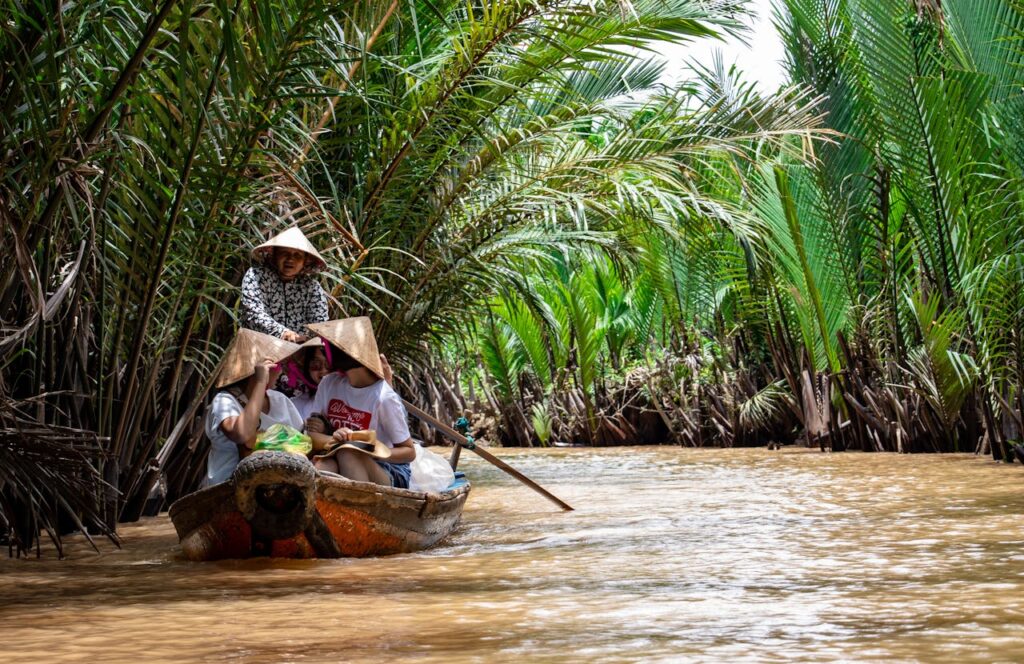Hue, located in central Vietnam, is a city steeped in history and culture. As the former imperial capital of the Nguyen Dynasty, Hue is renowned for its ancient architecture, royal tombs, and historical landmarks. The city is divided by the Perfume River, with the old city and the Imperial Citadel on one side and the modern city on the other. Hue offers a unique glimpse into Vietnam’s royal past and is a UNESCO World Heritage Site. Here are some of the best places to visit in Hue, Vietnam:
Best Places to Visit
1. Imperial Citadel (Dai Noi)
The Imperial Citadel, also known as Dai Noi, is the most iconic landmark in Hue. This vast complex was the political, cultural, and religious center of the Nguyen Dynasty. The Citadel is surrounded by a large moat and fortified walls, with several gates leading into the inner grounds. Key attractions within the Citadel include the Forbidden Purple City, Thai Hoa Palace, and the Hue Royal Antiquities Museum. The complex is a testament to the grandeur of Vietnam’s imperial past.
- Key Attractions: Forbidden Purple City, Thai Hoa Palace, royal artifacts.
- Activities: Historical exploration, sightseeing.
- Location: Central Hue.
2. Thien Mu Pagoda
Thien Mu Pagoda, also known as the Pagoda of the Celestial Lady, is one of the oldest and most famous pagodas in Vietnam. Located on a hill overlooking the Perfume River, the seven-story pagoda is a symbol of Hue. The pagoda complex includes a beautiful garden, a giant bell, and a pavilion housing a statue of a laughing Buddha. The pagoda is also home to a historical car, associated with a significant moment in Vietnam’s history. The tranquil setting and spiritual ambiance make Thien Mu Pagoda a must-visit.
- Key Attractions: Seven-story pagoda, giant bell, historical car.
- Activities: Temple visits, photography, meditation.
- Location: Perfume River, Hue.
3. Tomb of Khai Dinh
The Tomb of Khai Dinh is one of the most elaborate royal tombs in Hue. Built for Emperor Khai Dinh, the complex features a blend of traditional Vietnamese and European architectural styles. The tomb is set on a hillside and includes several terraces, pavilions, and statues. The main building, Thien Dinh Palace, is adorned with intricate mosaics and a stunning ceiling mural. The tomb’s unique design and ornate decorations make it a fascinating site to explore.
- Key Attractions: Thien Dinh Palace, intricate mosaics, statues.
- Activities: Sightseeing, architectural exploration.
- Location: Chau Chu Mountain, Hue.
4. Tomb of Minh Mang
The Tomb of Minh Mang is another significant royal tomb in Hue, known for its harmonious blend of natural and architectural elements. The tomb complex is situated in a peaceful setting surrounded by lakes and gardens. The main structures include the Dai Hong Mon gate, the Stele Pavilion, and the Minh Lau Pavilion. The layout of the tomb is symmetrical, reflecting the emperor’s Confucian beliefs. The serene environment and beautiful design make it a tranquil place to visit.
- Key Attractions: Symmetrical architecture, gardens, lakes.
- Activities: Walking, historical exploration.
- Location: Cam Ke Hill, Hue.
5. Perfume River
The Perfume River is a picturesque river that flows through Hue, dividing the city into the old and new quarters. The river is named for the fragrant flowers that fall into the water from nearby orchards. A boat cruise on the Perfume River is a popular activity, offering scenic views of the city, lush landscapes, and historical sites. Key attractions along the river include the Thien Mu Pagoda, Hon Chen Temple, and various royal tombs. The river is especially enchanting at sunset.
- Key Attractions: Scenic views, historical sites.
- Activities: Boat cruises, sightseeing.
- Location: Hue.
6. Dong Ba Market
Dong Ba Market is the largest and oldest market in Hue, offering a vibrant shopping experience. The market is a bustling hub where locals and tourists can find a wide range of products, including fresh produce, seafood, clothing, and souvenirs. Dong Ba Market is also an excellent place to sample traditional Hue dishes, such as bun bo Hue (spicy beef noodle soup), banh khoai (Hue-style pancakes), and che (Vietnamese sweet soup). The market provides a lively atmosphere and a taste of local culture.
- Key Attractions: Fresh produce, local cuisine, souvenirs.
- Activities: Shopping, dining, cultural exploration.
- Location: Tran Hung Dao Street, Hue.
7. Tomb of Tu Duc
The Tomb of Tu Duc is one of the most picturesque royal tombs in Hue. Built for Emperor Tu Duc, the complex is set amidst a peaceful landscape of pine forests, lakes, and gardens. The tomb reflects the emperor’s poetic sensibilities and includes various structures, such as the Khiem Cung Gate, the Xung Khiem Pavilion, and the Hoa Khiem Temple. The site also features a small island with a pavilion, where the emperor wrote poetry. The tomb’s tranquil environment and historical significance make it a must-visit.
- Key Attractions: Pine forests, lakes, poetic architecture.
- Activities: Walking, sightseeing, photography.
- Location: Thuong Ba Village, Hue.
Summary Table
| Place | Description | Key Attraction | Distance from City Center |
|---|---|---|---|
| Imperial Citadel (Dai Noi) | Historic complex with palaces and temples | Forbidden Purple City, royal artifacts | Central Hue |
| Thien Mu Pagoda | Iconic seven-story pagoda overlooking the Perfume River | Giant bell, historical car | Perfume River, Hue |
| Tomb of Khai Dinh | Elaborate tomb with a blend of Vietnamese and European styles | Thien Dinh Palace, mosaics | Chau Chu Mountain, Hue |
| Tomb of Minh Mang | Symmetrical tomb complex surrounded by gardens and lakes | Stele Pavilion, Minh Lau Pavilion | Cam Ke Hill, Hue |
| Perfume River | Scenic river offering boat cruises and scenic views | Thien Mu Pagoda, royal tombs | Hue |
| Dong Ba Market | Largest market in Hue offering local products and cuisine | Fresh produce, traditional dishes | Tran Hung Dao Street, Hue |
| Tomb of Tu Duc | Picturesque tomb complex with poetic architecture | Khiem Cung Gate, lakes, gardens | Thuong Ba Village, Hue |
How to Reach Hue
By Plane
Phu Bai International Airport (HUI) is the nearest airport to Hue, located about 15 kilometers south of the city center. The airport offers domestic flights to and from major cities like Hanoi and Ho Chi Minh City. From the airport, travelers can take a taxi or shuttle bus to reach the city.
By Train
Hue is connected to the North-South Railway, also known as the Reunification Express. The Hue Railway Station is centrally located and provides train services to cities like Hanoi, Da Nang, and Ho Chi Minh City. The train journey offers scenic views of Vietnam’s countryside.
By Bus
Several bus companies operate routes to and from Hue, with connections to nearby cities such as Da Nang and Hoi An. The main bus station is located in the city center, making it convenient for travelers.
By Car
Visitors can rent a car or hire a private driver to explore Hue and its surrounding areas. The city’s road network is well-maintained, and driving is a convenient option for those who prefer a more flexible itinerary.
Best Time to Visit Hue
The best time to visit Hue is during the dry season, from February to April, when the weather is warm and pleasant. This period is ideal for exploring the city’s outdoor attractions and historical sites. The rainy season, from September to December, brings cooler temperatures and frequent rainfall, but it can also be a good time to experience Hue’s serene beauty.
Travel Tips
- Local Cuisine: Hue is renowned for its unique and flavorful cuisine, characterized by a mix of royal and local dishes. Must-try dishes include bun bo Hue, banh beo (steamed rice cakes), and nem lui (grilled pork skewers). The city’s street food stalls and local restaurants offer a wide variety of traditional flavors.
- Cultural Insights: Hue is a city rich in history and culture, with a strong influence from its imperial past. When visiting religious sites and royal tombs, dress modestly and remove your shoes before entering. Respect local customs and traditions, and be mindful of cultural etiquette.
- Safety Tips: Hue is generally safe for tourists, but it’s important to take standard precautions. Keep personal belongings secure, especially in crowded areas and on public transportation. Be cautious when exploring remote areas or less frequented sites.
Itinerary Suggestions
One-Day Trip
- Morning: Start your day with a visit to the Imperial Citadel, exploring the palaces, temples, and historical artifacts. Afterward, visit the Thien Mu Pagoda and enjoy the scenic views of the Perfume River.
- Afternoon: Have lunch at a local restaurant, then visit the Tomb of Khai Dinh to admire its intricate mosaics and architecture. In the afternoon, take a boat cruise along the Perfume River and visit the Tomb of Minh Mang.
- Evening: End your day with a visit to Dong Ba Market, shopping for souvenirs and sampling traditional Hue dishes.
Weekend Getaway
- Day 1: Begin with visits to the Imperial Citadel and Thien Mu Pagoda. In the afternoon, explore the Tomb of Tu Duc and enjoy the serene surroundings. In the evening, take a boat ride along the Perfume River and enjoy a traditional Vietnamese dinner.
- Day 2: Start with a morning visit to the Tomb of Khai Dinh, then head to the Tomb of Minh Mang for a peaceful walk through the gardens and lakes. In the afternoon, explore the local markets and shops in the city center. Conclude your trip with a visit to a traditional performance or a relaxing evening by the riverside.
Hue’s rich history, stunning architecture, and unique cultural heritage make it a captivating destination in Vietnam. Whether you’re exploring its royal tombs, experiencing its vibrant markets, or enjoying its traditional cuisine, Hue offers a rich and memorable experience for all visitors.





